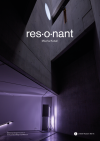performing the public. Yael Bartana, Mischa Kuball, Gregor H. Lersch
A discussion of questions of artistic strategies in public space
within the context of res.o.nant, recently published by Sternberg Press.
Institutional and freely staged performative formats use a variety of experimental means in seeking a relationship to a public whose presentation has long since ceased to be homogenous, but is instead diverse, with many voices. Yael Bartana, a performance and multimedia artist, and Mischa Kuball, a conceptual artist (his work, res.o.nant, has been on display in the Jewish Museum Berlin since the autumn of 2017, continuing until September 1, 2019) will be discussing current questions about artistic practice, their respective methods, and strategies, with Gregor H Lersch, curator at the Jewish Museum Berlin.
Within the context of res.o.nant, the conversation refers to an understanding of “publication” that semantically already includes the notion that a text addresses and is made available to a public per se. Inherent in the concept of publishing is that of “making public.” As Vanessa Joan Müller wrote in 2015 with reference to Mischa Kuball’s public preposition: “As the public is a social medium, the ‘making available’ of information and communication plays a fundamental role in its establishment. … The classic notion of the public sphere that is fundamental to democratic theory thus includes processes of general interest as well as communication directed toward an unlimited audience and the public accessibility of spaces and places.”
Bury Our Weapons, Not Our Bodies!, presented by Yael Bartana as a public performance (September 2018, Philadelphia Museum of Art), examines systemic violence and displacement by means of a metaphorical and symbolic act of burial, connected with a call to action. The formation of a “living monument” describes the end of violence, thus linking burial rituals with personal testimony. Through Bury Our Weapons, Not Our Bodies!, Yael Bartana deepens her artistic research by examining current questions of national identity. Her 2018 work, Absence Monument, dedicated to the victims of the violent suppression of student demonstrations in Mexico City on October 2, 1968, ties 400 footprints of survivors in cement to the memory of those who were murdered.
The conversation will take place in English.
